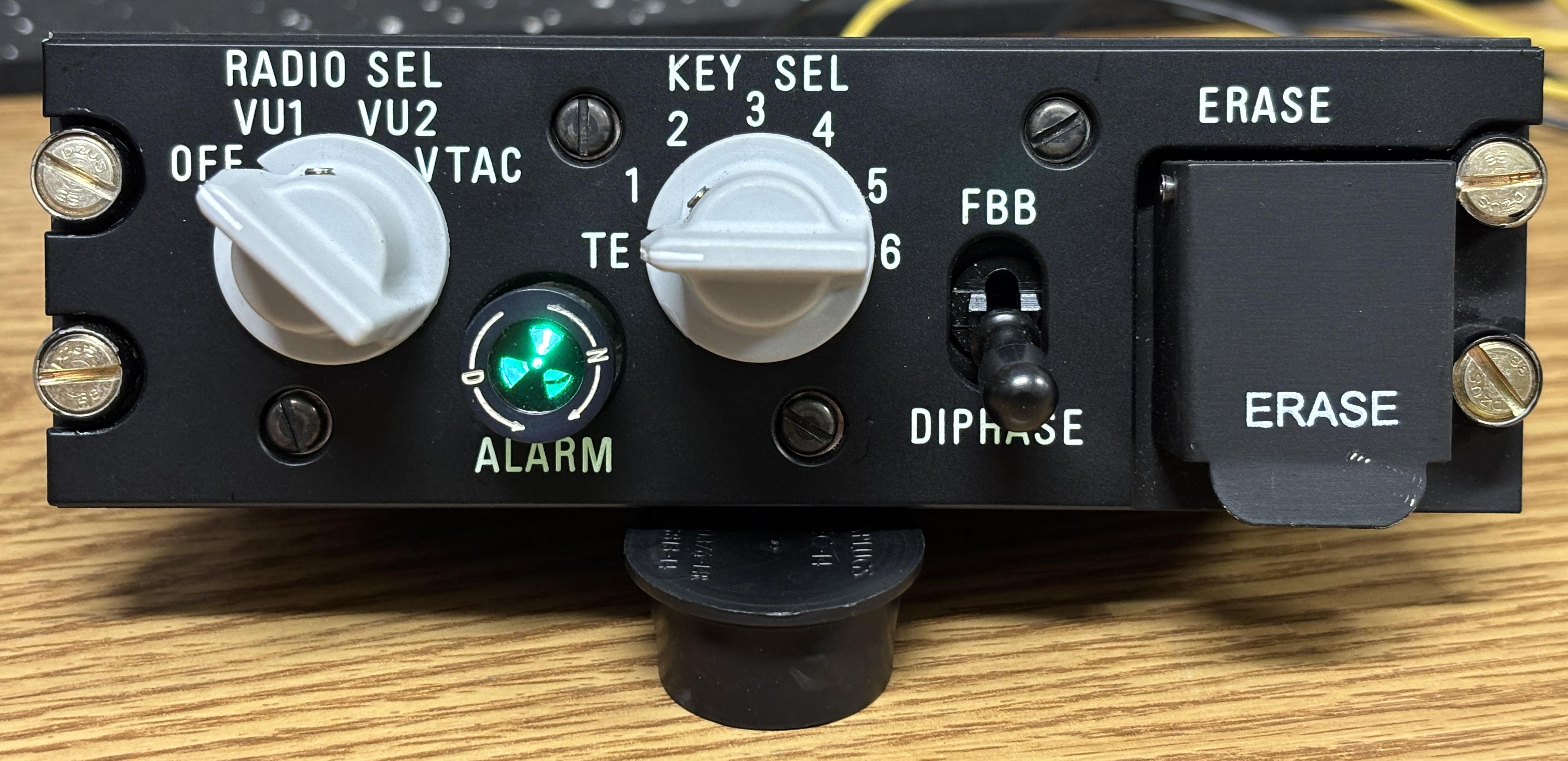DISCLAIMER: This control panel is a demilitarized surplus component purchased through civilian channels. It contains no cryptographic hardware, classified technology, or active radio capability. It is presented here solely for historical and educational interest. Nothing in this article should be interpreted as technical guidance for operating, replicating, or transmitting on military communications systems.
This control panel was made by BAE Systems Avionics in the 90s and is the pilot's interface for the secure communications system equipped in aircraft such as the Lynx Helicopter and BAE Nimrod. It likely interfaced between the aircraft's radios and the secure voice equipment, such as the KY-58 VINSON or similar COMSEC equipment.
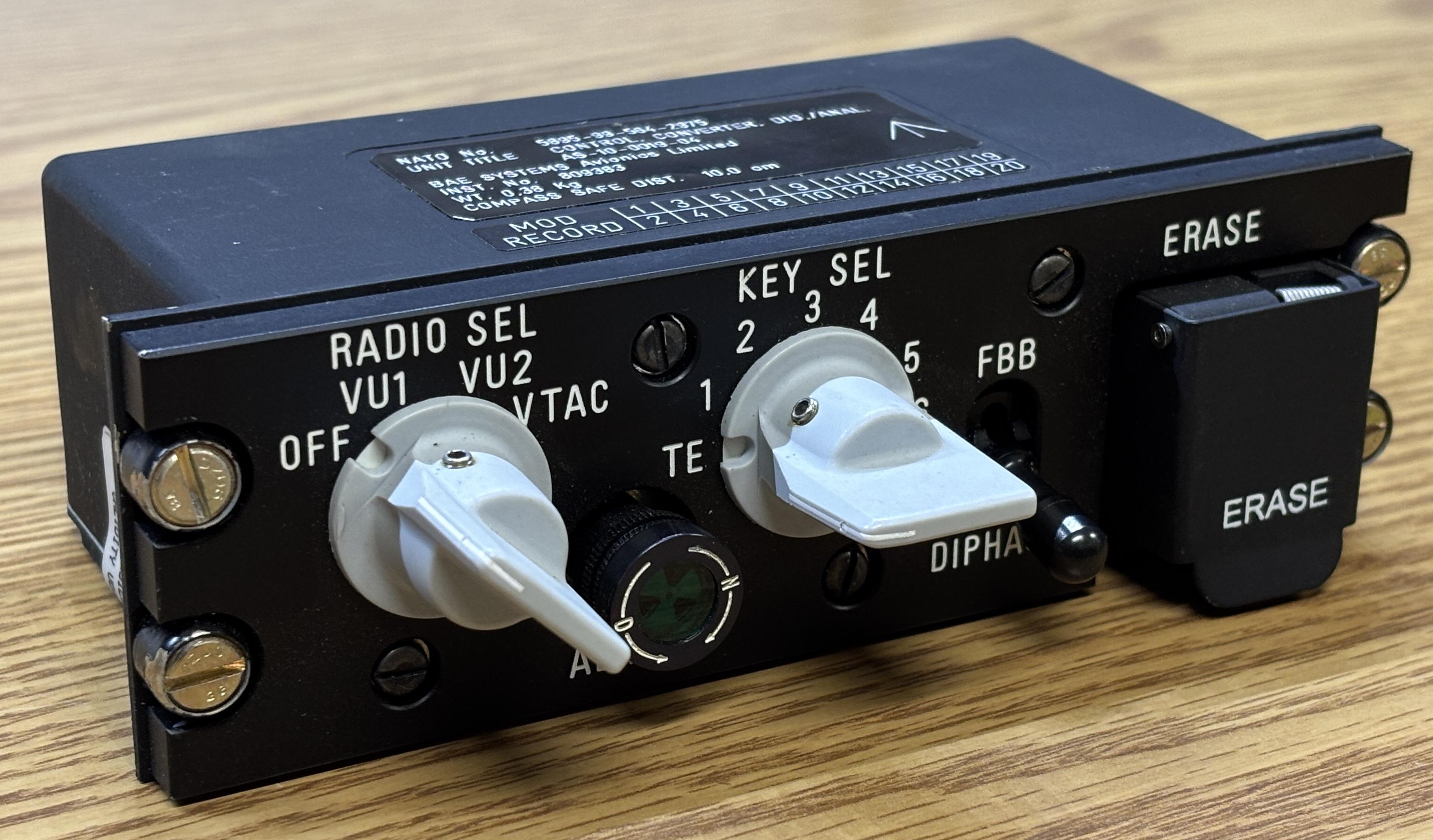
On this device, there are a variety of controls for the pilot to interact with. The RADIO SEL rotary switch allows two different VHF/UHF radios to be selected, or a tactical (VTAC) radio, or the system to be turned off. They KEY SEL rotary switch allows the pilot to select from one of 6 pre-loaded encryption keys. The keys are loaded or "filled" using an external filler device often before the aircraft takes off. We presume the "TE" position of the key selector switch is for training or an unencrypted mode. The FBB/DIPHASE switch allows the pilot to select between a fallback unencrypted mode (or hardcoded keyset), or the DIPHASE secure voice modulation scheme. There is an indicator labeled ALARM that presumably illuminates when there is a problem with the radios or control system. Lastly there is a guarded pushbutton labeled ERASE, which immediately zeroizes (destroys) all encryption keys.
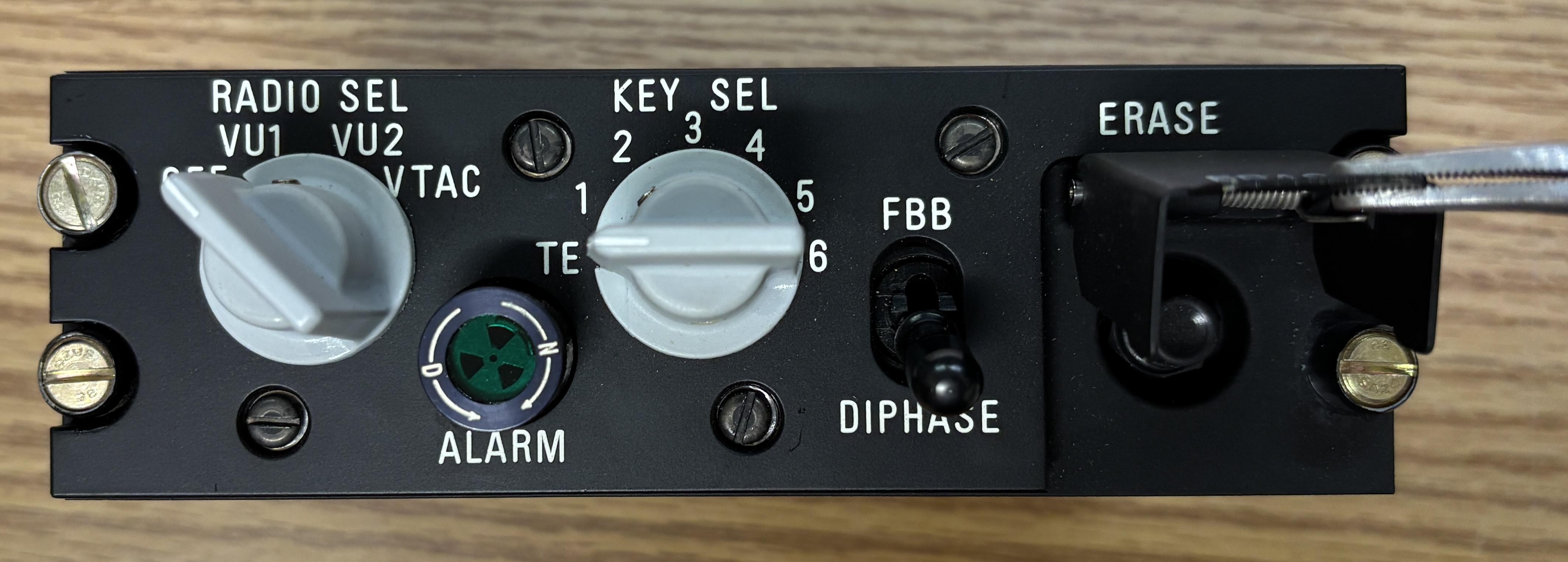
On the top of the unit is an information label that contains the manufacturer, NATO stock number, description, part number, serial number, weight, compass safe distance, and a modification record.
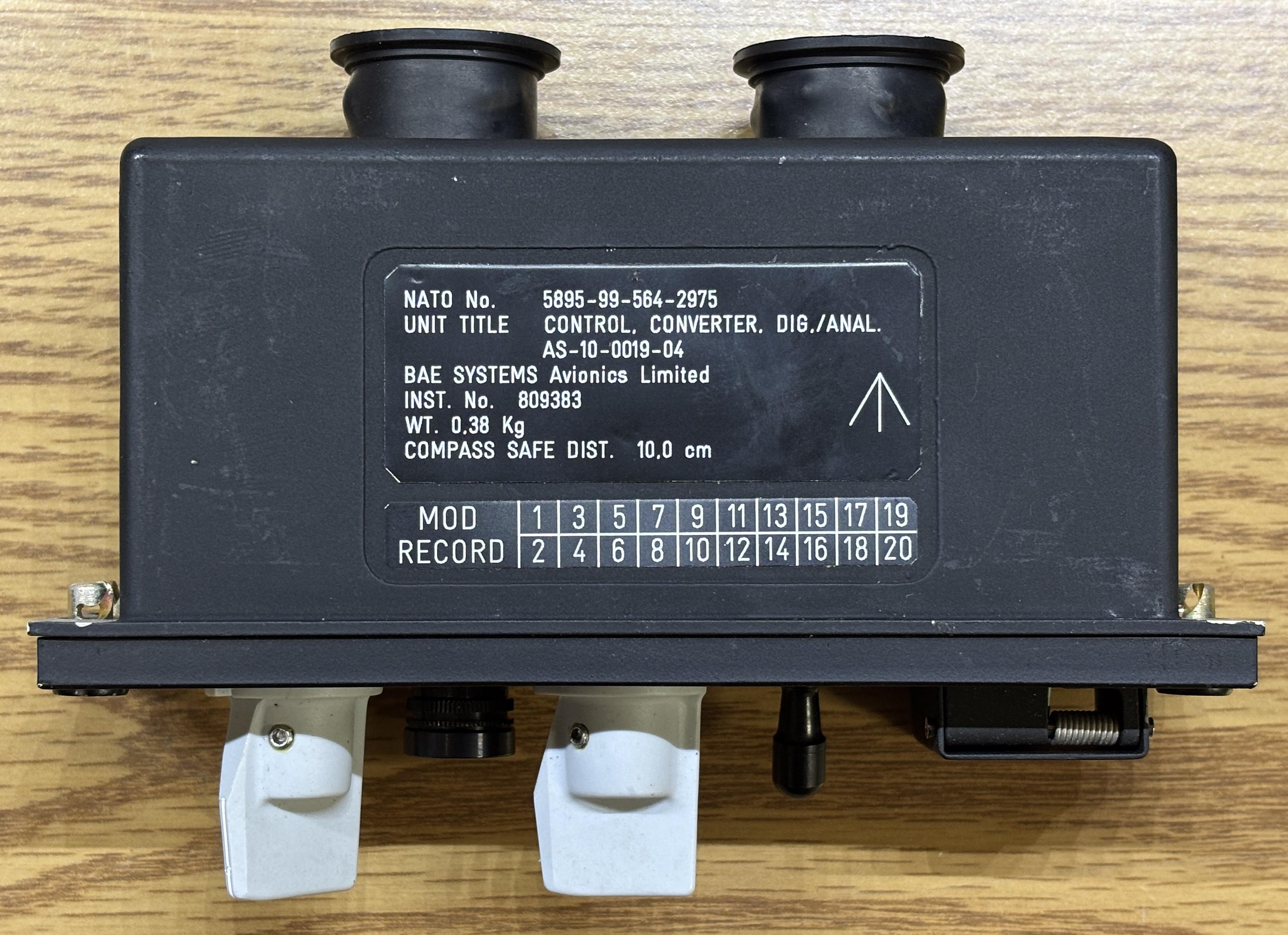
On the side is a warning label that indicates the presence of cadmium plated connectors. The cadmium plating helps prevent the buildup of corrosion and the finish is often referred to as "olive drab cadmium". Be careful when working with these connectors, as cadmium is a toxic metal and should not be inhaled or ingested.
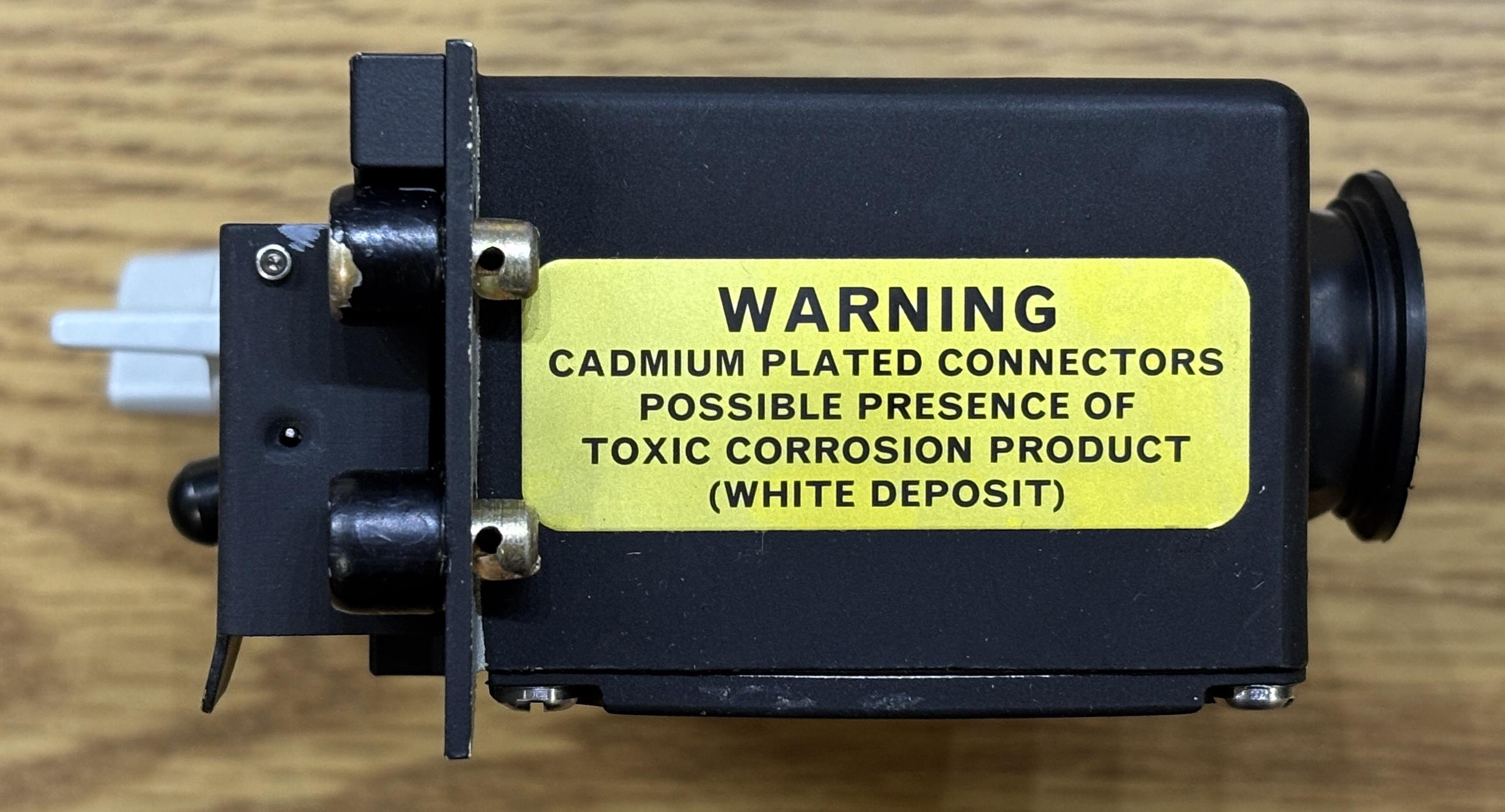
On the bottom of the unit are 6 slotted screws with lock washers that secure the bottom panel to the rest of the case. There is also a validity label from BAE systems which we had to cut.
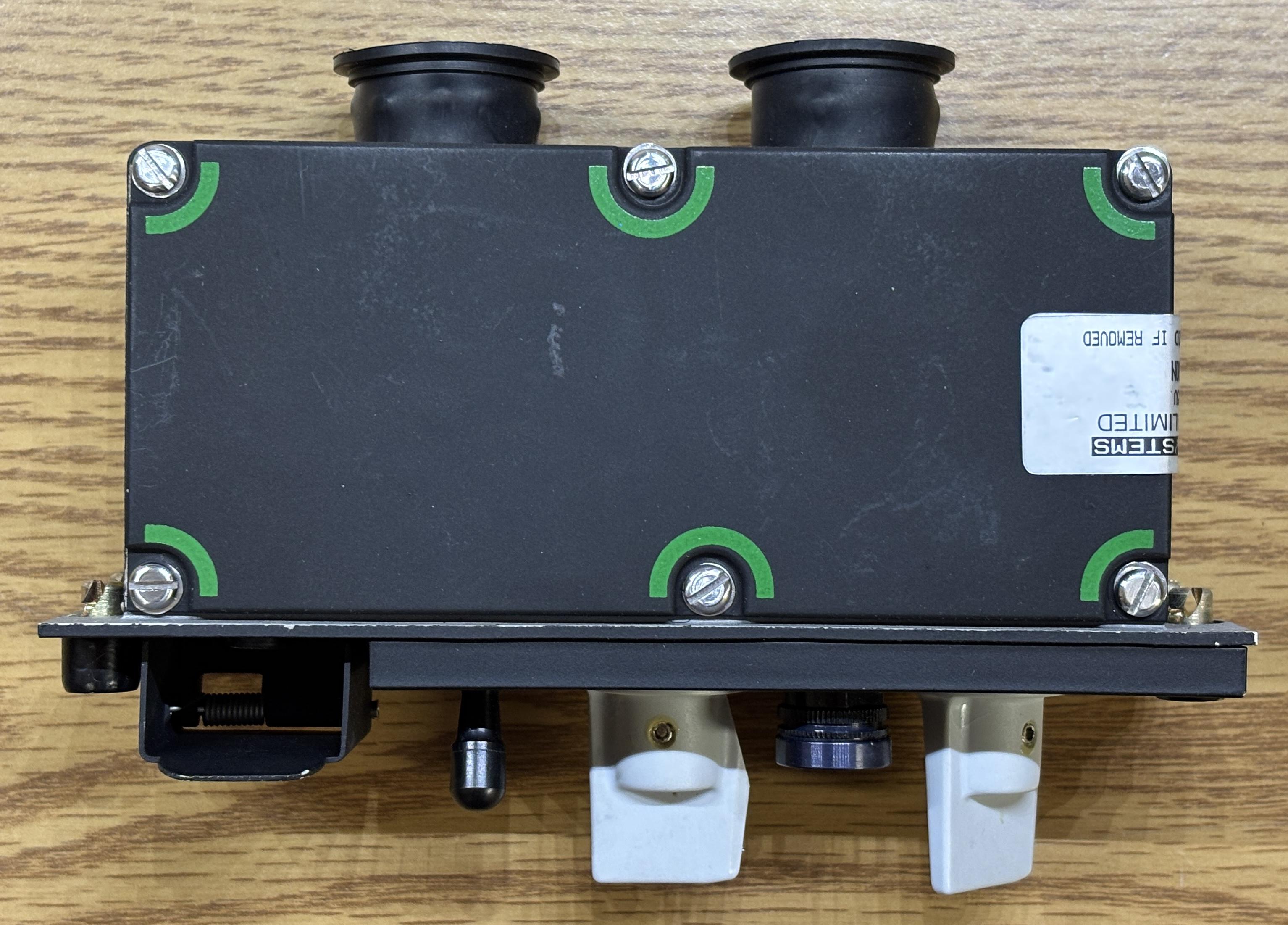
On the back are two similar 19-pin, cadmium-plated, twist-lock connectors. The connectors were manufactured by Amphenol and have a part number of 602GB-02A14-19PN. They may look identical, but they keying is slightly different to prevent inserting the incorrect plug.
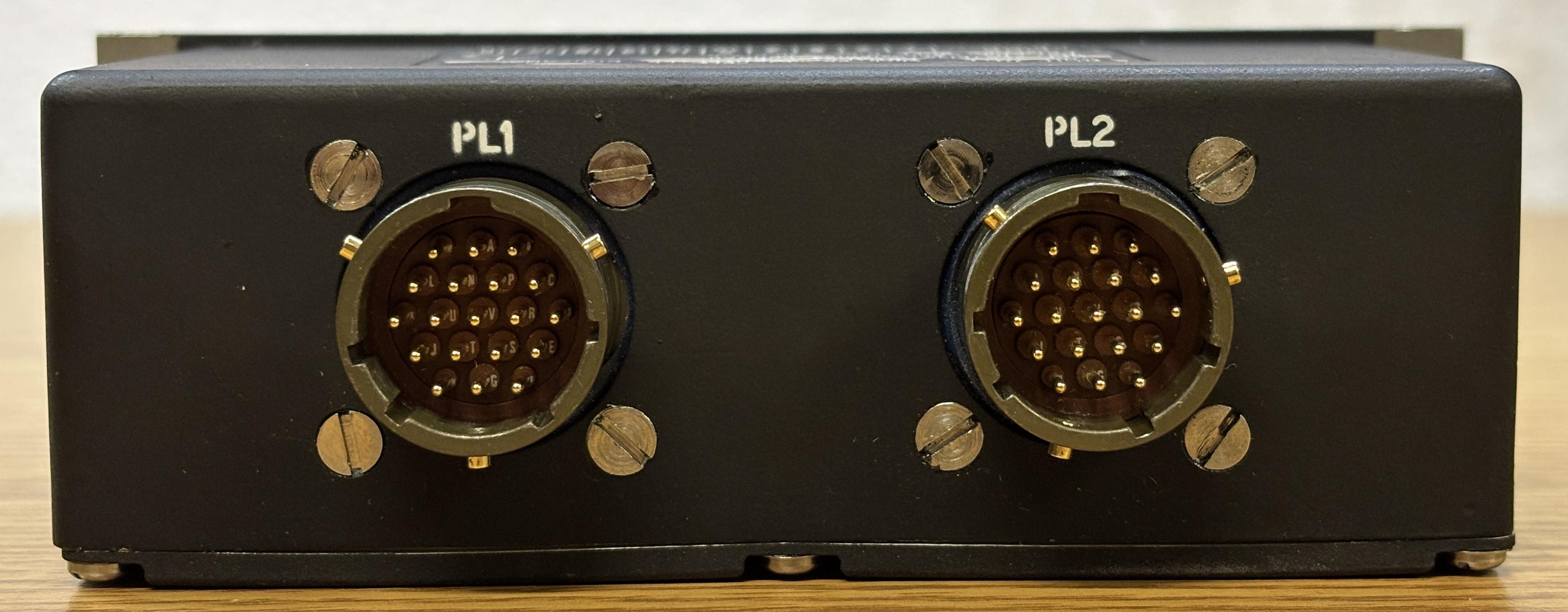
The bottom cover can be easily removed by undoing the 6 captive screws. It has a gasket that seals it to the rest of the case.
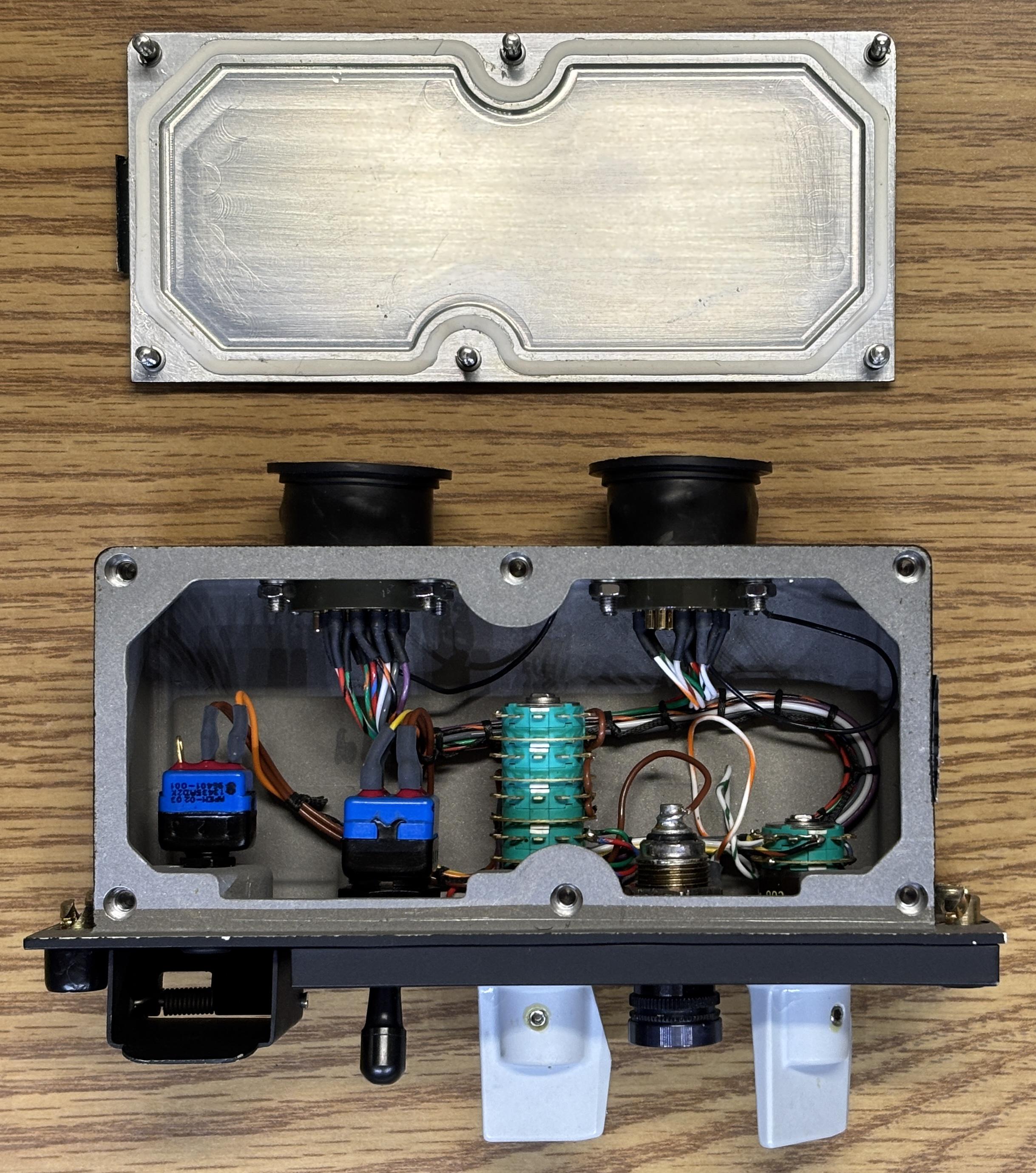
The inside of the unit is very straightforward, it's just some switches and an indicator. There are no circuit boards or additional logic. The colored wires make it very easy to decipher the pinout and trace connections from the controls to the rear connectors.
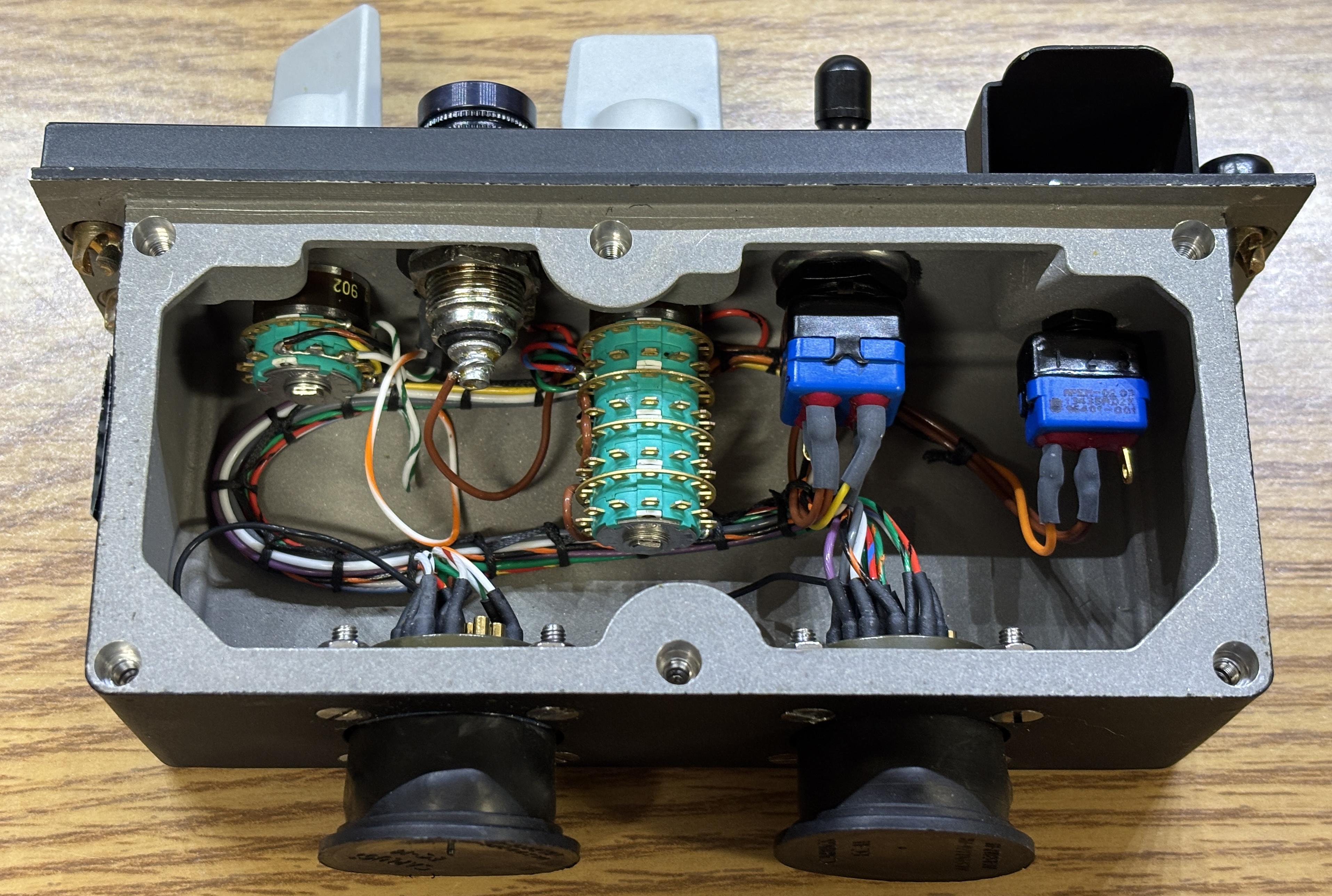
The backlit front panel can be removed by undoing four slotted screws. It then pulls away from the metal frame. The panel does not use a connector and instead has two wires directly soldered to some pins. They left some extra length in the harness to allow the backlight panel to be pulled out a bit. The backlight panel has a maximum voltage of 28 VDC and was manufactured in 1998 by James Wilson LTD. located in Poole, England.
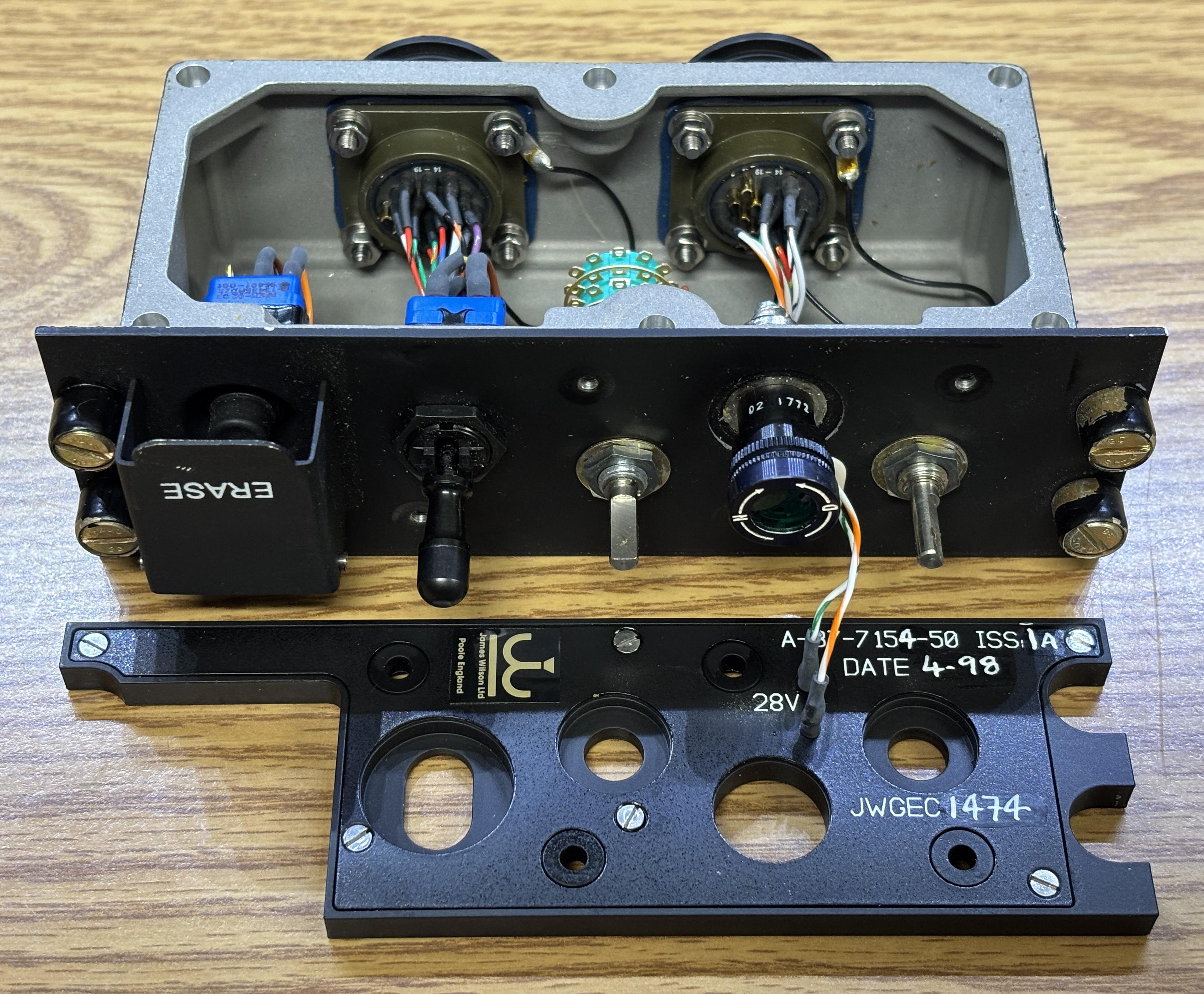
Supplying 28 VDC to pins K & L of PL2 (polarity independent) causes the panel backlight to illuminate a nice pale green color. It's not very bright but is clearly visible at night or with the ambient lights dimmed down.
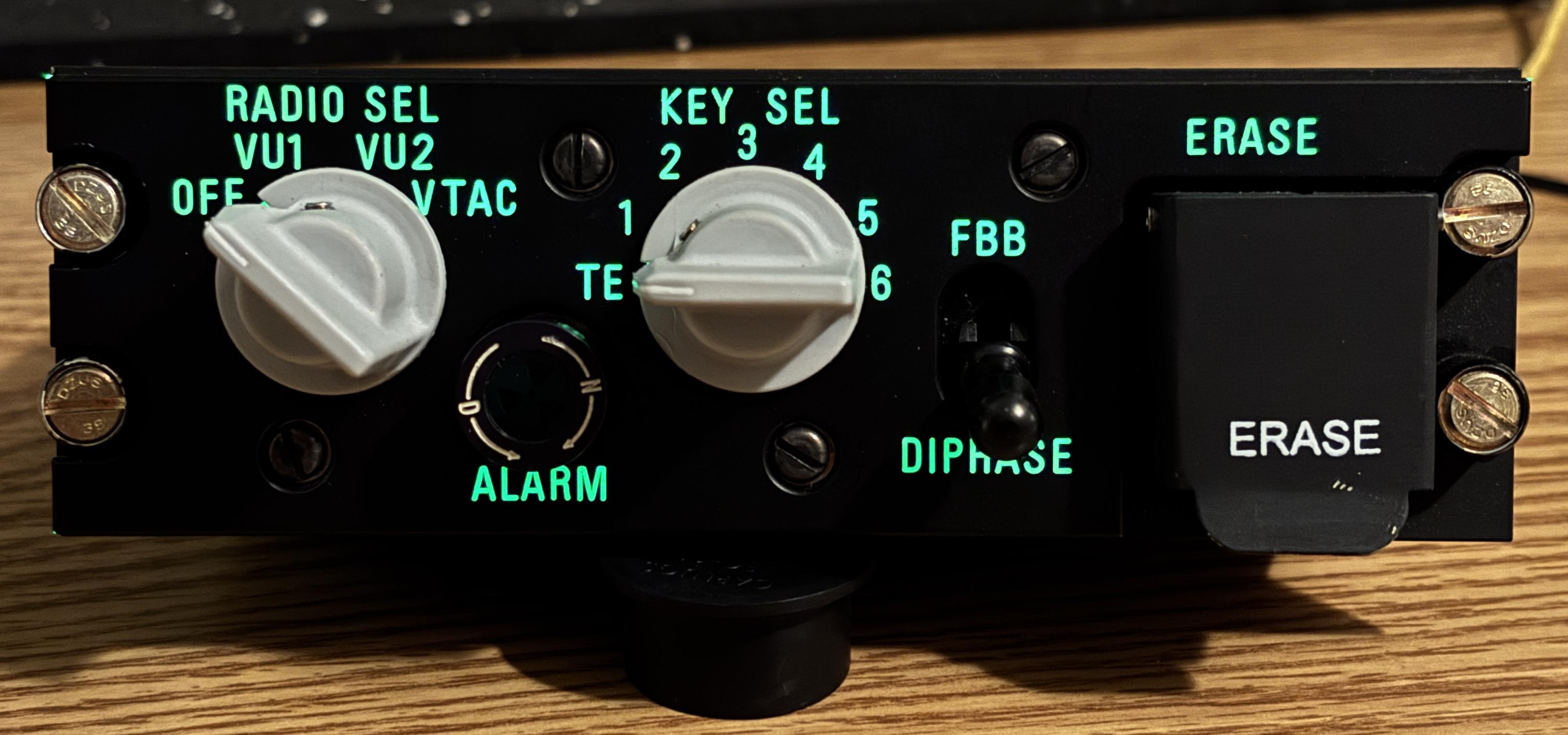
Supplying 28 VDC to pins C & H of PL1 (polarity independent) will illuminate the alarm indicator. This is the most unique panel indicator we have seen. It's an incandescent bulb in a cylindrical enclosure that shines through a stamped metal stencil. The stencil resembles a radiation warning symbol when light illuminates it. A colored piece of plastic is then pressed into an outer ring to give the light a nice green color similar to that of the panel backlight. The outer bezel ring on the front of the indicator can be rotated to block most of the light from passing except for a small center hole. This was most likely to allow the pilot to adjust the visibility of the indicator and prevent it from being a distraction in a dark cockpit. The ring has directional arrows with the letters D and N, which likely correspond to day (maximum illumination) and night (minimum illumination).
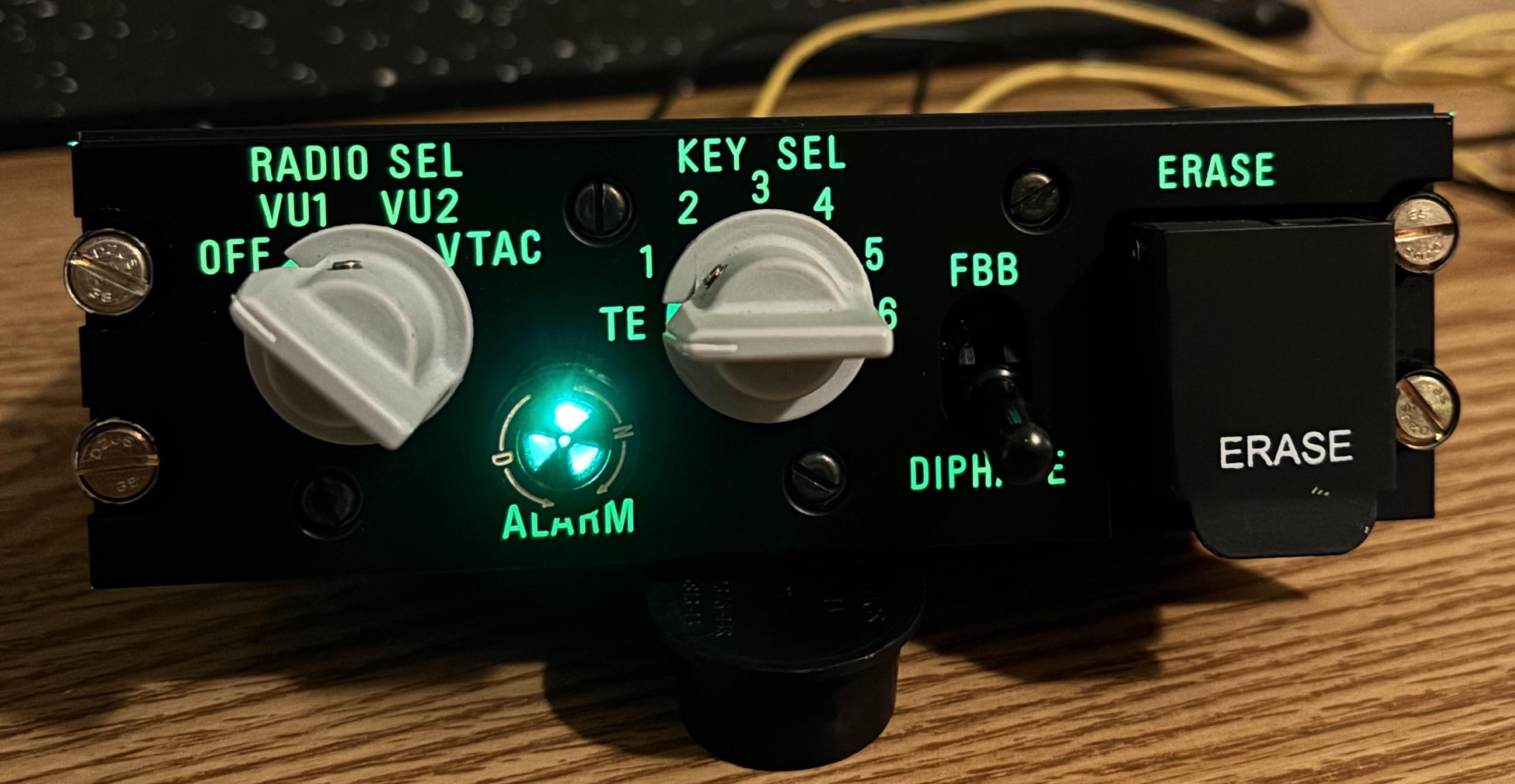
In the image below, the outer ring of the alarm connector was rotated all the way to the right (closed) position. Only a small amount of light is able to pass through the center pinhole. Based on some research, it seems like this indicator may be called a mechanical masked annunciator lamp. It is important to note that in this case, the indicator is not being used to represent any sort of radiation warning, despite the symbol. This symbol is easily distinguishable from many other cockpit indicators and was likely chosen since it draws attention when illuminated,
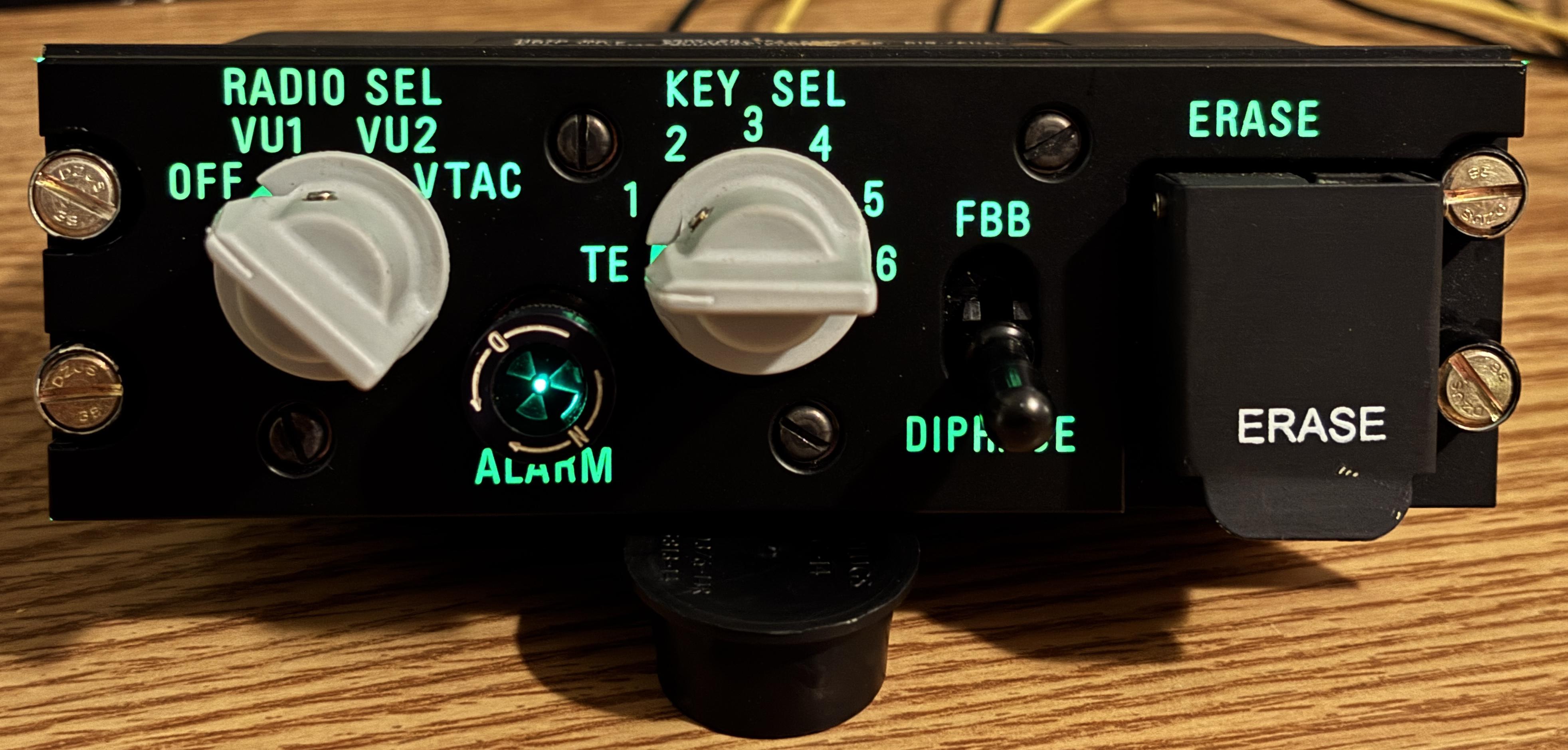
We honestly just bought this control panel for that unique indicator!
